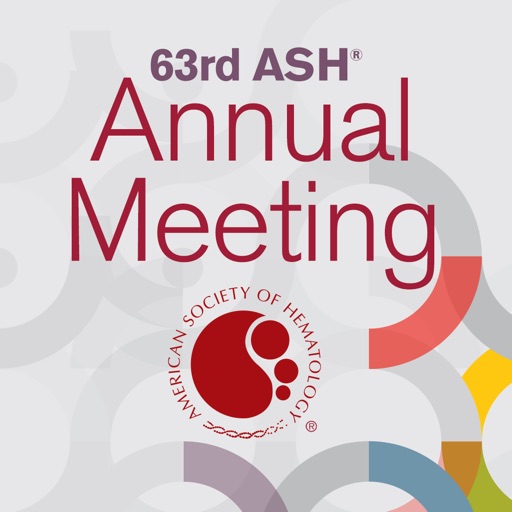Updates on Essential Thrombocythemia
Dr. Ruben Mesa
March 2022
The latest updates from blood cancers and diseases are shared with top doctors and medical experts around the world at a conference called ASH, the last one looking ahead to 2022.
The focus of this segment is updates on essential thrombocythemia or ET and promising treatments. Thanks to our special guest, renowned myeloproliferative neoplasms or MPNs specialist, Dr. Ruben Mesa, Executive Director at the Mays Cancer Center at UT Health San Antonio MD Anderson.
That was really the watershed moment—that discovery of the JAK2 mutation.
Dr. Ruben Mesa
Introductions
The Patient Story: Hi, everyone, it’s Stephanie with The Patient Story, and I hope you’re all doing well wherever you’re joining us from. Good morning, good afternoon, good evening, even. I am so thrilled to introduce our special guest today—a leading voice in myeloproliferative neoplasms or MPNs and the studies and the research going on, Dr. Ruben Mesa, who’s a professor of medicine and executive director of the UT Health San Antonio, M.D. Anderson Cancer Center. Dr. Mesa, welcome today.
Dr. Ruben Mesa: Stephanie, it’s a pleasure to be here today.
The Patient Story: I know we have a lot to cover because the conversation should happen throughout the year, but the impetus was this big blood cancer conference where people are sharing these ideas and updates from all this research. I want to get your thoughts on the big takeaways.
Change in the overall MPNs treatment conversation
The Patient Story: I know it has shifted a lot, has changed a lot. The conversations doctors were having with patients with myelofibrosis back then versus now are vastly different, right?
Dr. Ruben Mesa: As I break it down for folks, I look at it really in terms of that first 15 years and the second 15 years. And what happened in the middle was the discovery of the JAK2 mutation, so the first in a series of discoveries as to the genetic changes as to why patients develop MPNs.
Prior to that, we were trying to do everything we could to help MPNs. We did not have any drugs that were specifically developed for the diseases. We had to really beg, borrow or steal drugs that were being developed for other reasons. But nothing was particularly effective.
I think it should be really a sense of hope. There is tremendous progress going on on all fronts.
Dr. Ruben Mesa
And then, in this second 15 years, that scientific discovery really fueled an era of development of new therapies of several drugs that have now been approved. Many drugs that are in development and important progress we saw at this year’s ASH. Tremendous progress. But that was really the watershed moment—that discovery of the JAK2 mutation.
Many drugs that are in development and important progress we saw at this year’s ASH. Tremendous progress. But that was really the watershed moment—that discovery of the JAK2 mutation.
What are the high-level takeaways for you from this year’s ASH?
I think it should be really a sense of hope. There is tremendous progress going on on all fronts. Progress in terms of trying to understand the biology of the disease.
The Patient Story: Thank you for sharing that, and as a fellow blood cancer patient, I’m indebted to the brilliant minds who decide what are the areas that are hardest, where there are unmet needs. Let’s just go and tackle them. I appreciate that. And I know that our patients and caregivers do as well.
So, without further ado, you mentioned ASH, the name of this big conference. What were the sort of big, high-level takeaways for you on what was presented this year?

Dr. Ruben Mesa: First, frame for patients that the ASH meeting is really the key meeting that occurs on an annual basis where we connect regarding the updates across all blood diseases. But for MPN, it’s probably the single most critical global meeting on an annual basis. It really makes a big impact where the key discoveries are announced, as well as key clinical trial data. So it really is the key piece.
And even though this year it was a hybrid; it’s about 13000 in person, but overall, 30000 participating in the key meeting.
Key takeaways—as I’ve shared with MPN patients, I think it should be really a sense of hope. There is tremendous progress going on on all fronts. Progress in terms of trying to understand the biology of the disease—why does it occur? Why do people progress? That’s critical research. Then really ends up developing, how we monitor the disease, how we diagnose it, how we help to prevent progression.
As a treating hematologist, I focus on the therapies we can really use either now or in the near future. And I like that, one, there’s real progress in the earlier MPNs, ET MP Vera diseases where we’ve had a limited number of drugs for a very long time.
So a couple of important studies to mention there in terms of new options that may be available soon. Second, in myelofibrosis, very important studies on multiple new therapies, both that are either JAK inhibitors, a certain class of drugs that we’ve been testing. But many non-JAK inhibitors and now many questions of should these be combined and in which setting.
Essential Thrombocytopenia (ET) Treatments
The Patient Story: I love to highlight this word combined. We know that drugs are tested to be used individually first, and then people talk about them. Now let’s study how they do with others and then maybe move them up. So there’s a lot to talk about. And I know like you said, promising time. I know there’s a lot. There’s three different areas here to cover. Do you want to start with the essential thrombocytopenia?
Dr. Ruben Mesa: With ET, our current landscape is our options primarily are hydroxyurea for cytoreductive therapy. Everyone’s on aspirin, but some people get hydroxyurea or have been getting ropegylated interferon off-label to control counts or anagrelide used as second line.
You get a sense of a recurring theme, what’s an unmet need? People go on hydroxyurea, but they don’t tolerate it. The counts aren’t controlled. So what else do you do next?
Dr. Ruben Mesa
A relatively limited bench—three drugs. Some people receive ruxolitinib if they have failed these prior therapies.
Ropegylated interferon alfa 2-b
First, there is a drug that’s now been approved in PVera called ropegylated interferon alfa-2b or BESREMi.

I presented data on an evolving study that’s still accruing that is looking at the role of ropegylated interferon versus a control drug anagrelide for patients that have ET, have a high platelet count, have a high white count, but have failed hydroxyurea. So that could be very important because that could lead if that study is beneficial to ropegylated interferon potentially being approved for patients with the ET.
Potential benefits of an interferon in ET is it may help in addition to controlling the platelet count, which is a key goal, it may help to impact the biology of the disease more, decrease the likelihood of disease progression, control symptoms. So there may be a stronger advantage.
IMG 7289 (bomedemstat)
There was also a second trial presented. A drug that is being tested both in my center but also a trial across Europe that is trying to work on the bone marrow in a slightly different way. It’s a drug called IMG 7289 or bomedemstat. And this was a trial for patients who had been on hydroxyurea, failed hydroxyurea, have a high platelet count.
You get a sense of a recurring theme, what’s an unmet need? People go on hydroxyurea, but they don’t tolerate it. The counts aren’t controlled. So what else do you do next?
This drug showed that the vast majority of people who had failed one or more drugs were able to have their platelets controlled by this new drug that is investigational, and that was very favorable. Some side effects can impact some nausea, the sense of taste that might be modified by the pills, and when it is taken.
But in a positive early study, for people less initiated, we typically try a drug. We have a sense of whether it’s safe before it gets into clinical trials. We try to find a dose. Then we try to see, is it effective for what we hope to use it for?
And then the final step for approval is, is it better than what we currently use? So the Ropeg is really asking the question, is it better than what we currently use? Is it better than anagrelide, which is the current state for second-line therapy for essential thrombocythemia?
The IMG 7289 is a little earlier, but asking that question: Does it lower the platelets? It seems like it. It does. So the next logical question will be: What is it better than these other things?
Expected FDA approval
The Patient Story: Thank you for taking us through. Because that’s one of the questions, you have different phases. And it’s talking about dose and then all the way through. Is it better than the current standard of care? And so you’re giving us an idea of when patients may be able to see this. We don’t have a crystal ball, but it sounds like the ropeg is further along. It’s in Phase 3, and after this part of it, I hope that’s when the FDA will say we approve it or we don’t approve it, and maybe people will have access to it, right?
Dr. Ruben Mesa: It has a greater likelihood of being something that their doctor might be able to prescribe sooner, if appropriate. Both are things potentially that individuals might be able to access through a clinical trial if they’re in that situation and it is feasible for them to participate in a trial.
How these drugs are given
The Patient Story: Perfect. You talked about side effects, which is one of the top questions always. Another is administration or the way someone would take it. Could you compare? So you talked about Ropeg, and then I’m not even going to attempt. It sounded like a license plate IMG, but the way patients would get it and compare that to what the current standard is.
Dr. Ruben Mesa: IMG 7289 or bomedemstat is a pill. So they’d be taking it in that fashion.
The ropegylated interferon is a small injection under the skin people self-administer like a diabetic might give themselves insulin that they would give themselves every two weeks. So it’s a little more complicated.
But for people that have been on these therapies, usually, it’s not that big a burden, a very small injection. Women have done it with hormones if they’re dealing with infertility, diabetics with insulin. It seems a little intimidating at first, but usually, people are able to get the swing of it pretty well.
Because a lot of these drugs now are oral, they’re pills. The majority are oral now, but there are some that are subcutaneous and fewer. But some that need to be administered in a doctor’s office through an IV or something of that nature.
The Patient Story: Ok, thank you, Dr. Mesa. These are sometimes the quality of life impacts that people wonder about.
One other thing about the Ropeg is it is a biologic? I mean, what I heard you say was that it will help with the disease and not just maybe control it or control some of these symptoms. What I’m asking is, would this actually help with the disease as opposed to what we’re just trying to make sure that the platelets are OK or other major symptoms of ET?
Do these drugs address symptoms or also underlying cause of disease?
Be hopeful that there may be multiple new options available soon.
Dr. Ruben Mesa
Dr. Ruben Mesa: Both drugs actually are ones that we hope have an impact under the underlying biology of the disease and the early cells in the bone marrow or the stem cells that are affected.
For the most part, most of the therapies we’re looking at, we hope, really are not like our older drugs that were “chemotherapy drugs” that just are lowering the number of cells. We hope that, yes, the cells are lowered because that’s important, but it does so because it’s making impact on the disease.
We hope they are not like our older drugs that were “chemotherapy drugs” that are just lowering the number of cells. We hope that, yes, the cells are lowered because that’s important, but it does so because it’s making impact on the disease.
Message for ET patients and caregivers
The Patient Story: Ok, thank you so much for that. Any last message for patients and caregivers before we shift?
Dr. Ruben Mesa: Just to be hopeful that there may be multiple new options available soon. But if, at the current time their therapy really is not achieving its goals, they have to speak with their health care provider to see if one of these trials might be an option for them.

5 replies on “Essential Thrombocythemia | Dr. Ruben Mesa”
I’ve recently been diagnosed, with ET. I also have Factor V Leiden mutation. In the last 13 years I have had 4 superficial venous clots in my lower legs. I currently am taking 20mg of Xarelto daily for preventative care. Hydroxyurea was recommended by one hematologist I saw, but I am hesitant to take it due to how toxic it is, and the low therapeutic qualities of it. Is there anything out there in place of Hydroxyurea or any other chemo type drug that I can take to lower my platelets? I’m 53 and want to have good quality of life for as long as I can.
Very interesting. I am using propranolol to treat ET. It’s not very effective. I hope a better treatment becomes available.
Thank you for such great info !
However could you speak more on the side effects of the drug I feel like that is NOT discussed enough ????
Will there be any treatments for ET that help relieve the symptoms of the disease? Fatigue is especially troublesome. Thank you.
Are the symptoms of ET being
accepted by Doctors now eg
Chronic fatigue
Headaches
Bone pain
Itchiness
Anxiety